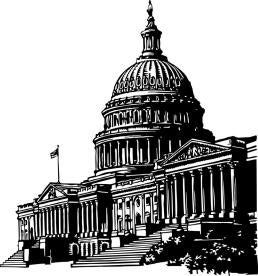If an agreement qualifies as a “subcontract” under a government contract, then it may be subject to certain flow-down, compliance, and reporting requirements. These requirements are intended to protect the government’s interests, and have significant ramifications for contractors, e.g., increasing transaction costs, expanding potential areas of exposure. These compliance obligations and risks can even deter some companies from performing under government contracts, especially those companies offering commercial items.
Currently, there is no uniform definition of “subcontract” in the applicable procurement regulations or in the procurement chapters under Titles 10 and 41 of the U.S. Code. Indeed, there are more than twenty varying definitions of “subcontract” in the FAR and DFARS, with many clauses failing to specify which definition applies. Now Congress is looking to address this lack of uniformity through the FY 2019 National Defense Authorization Act (NDAA).
The House’s Proposed Definition of “Subcontract”
The House’s version of the FY 2019 NDAA (H.R.5515), which passed on May 24, 2018, offers a single definition of “subcontract” that would be added to Chapter 1 of Title 41 and Chapters 137 and 140 of Title 10. Section 832 of H.R.5515 generally defines a “subcontract” to mean “a contract entered into by a prime contractor or subcontractor for the purpose of obtaining supplies, materials, equipment, or services of any kind under a prime contract. The term includes a transfer of a commercial product or commercial service between divisions, subsidiaries, or affiliates of a contractor or subcontractor.”
More importantly, section 832 excludes the following categories of agreements from the definition of subcontract: “(1) a contract the costs of which are applied to general and administrative expenses or indirect costs; or (2) an agreement entered into by a contractor or subcontractor for the supply of a commodity, a commercial product, or a commercial service that is intended for use in the performance of multiple contracts.” (See Section 831 for the definitions of a “commercial product” and a “commercial service,” which would replace the term “commercial item” for procurement purposes.)
The Significance of This New Definition
The HASC Committee Report explains that a single definition of “subcontract” would provide “clarification, simplicity, and consistency for defense procurement actions.” The Section 809 Panel – an independent advisory panel on streamlining DoD acquisition regulations – likely would agree with the HASC’s assessment as the House’s definition of “subcontract” appears to have been taken directly from the Section 809 Panel’s January 2018 Report.
The House’s proposed definition of “subcontract” is significant because it would exclude a broad range of agreements from that definition. As a result, fewer agreements would be subject to the mandatory flow-down, compliance, and reporting requirements imposed on procurement contracts.
This approach is consistent with the intent of the Section 809 Panel, which noted in its January 2018 Report that excluding commodities, commercial products and commercial services from the definition of subcontract “makes clear to both government and industry that Congress is serious about simplifying the procurement process, especially for items that are clearly available on the commercial market, for which the burden would be the greatest.”
Remaining Hurdles and Open Questions
There still remain a number of hurdles and open questions before contractors can rely on this narrowing of obligations.
- First, this new definition of “subcontract” must make its way into the final version of the FY 2019 NDAA. (The definition is missing from the SASC mark-up, S.2987, issued on June 5, 2018, and has not been included in any of the proposed Senate amendments.)
- Second, even if this new definition becomes part of the FY 2019 NDAA that ultimately is signed into law by President Trump, it still must be implemented through the FAR and DFARS.
- Third, key questions surrounding the implementation of this new definition and its potential impact would need to be addressed. For example, would this new definition apply to every mention of the word “subcontract” in the FAR and DFARS? Or, would exceptions to the general definition be needed, e.g., to avoid potential ambiguity in a clause or subpart, to ensure that particular requirements flow-down to certain categories of agreements? Would this new definition apply retroactively? What is the definition of a “commodity”? How will this new definition reconcile with requirements that exist, at least in part, outside the FAR and DFARS, e.g., requirements pertaining to Department of Labor regulations and related Executive Orders? And, finally, how would the new definition impact the underlying regulatory requirements that higher-tier contractors currently must flow-down to certain of their suppliers, and which serve to protect the government’s interests?
- Fourth, the timing of potential implementation remains unclear. To draw a parallel, Section 874 of the FY 2017 NDAA (Dec. 23, 2016) and Section 820 of the FY 2018 NDAA (Dec. 12, 2017) both included a definition of “subcontract” with less expansive exclusions that would apply only to commercial item subcontracting under 10 U.S.C. § 2375 and 41 U.S.C. § 1906, respectively. Years later, regulations still have not been promulgated, though the government has signaled that they are likely to be issued soon.
Accordingly, government contractors at all tiers should closely monitor developments related to this potential new definition of “subcontract,” as it will have significant ramifications downstream.





 i
i

